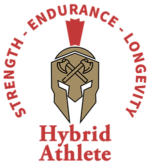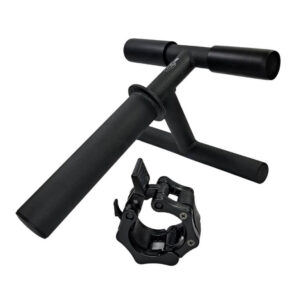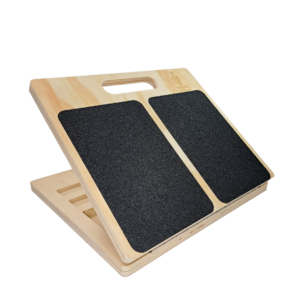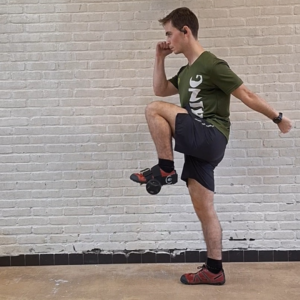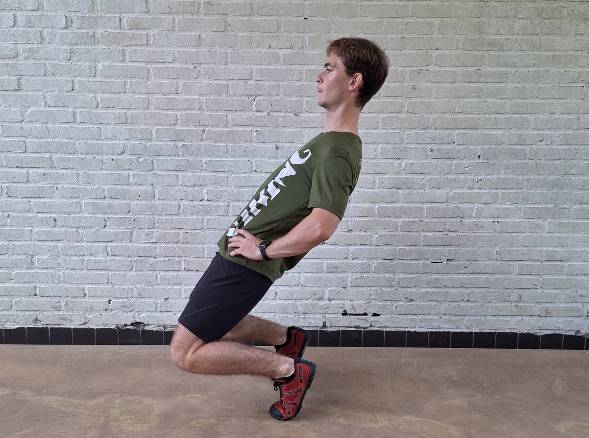
Named after the mythological king Sisyphus (yes, really), the sissy squat found its place in all sorts of training programs. In contrast to its slightly unfortunate name, this squat variation is not to be underestimated, because it’s not that easy to master.
On the other hand, we have the reverse Nordic curl, which we could even call a successor of the sissy squat.
What both of these have in common is – injury prevention! But which one should you implement into your routine?
Let’s talk about it.
Table of Contents
Both Are About Rectus Femoris Activation
On the front side, your femur (thigh bone) is supported by 4 big muscle heads (quadriceps):
- Vastus medialis (known for its oblique, the VMO)
- Vastus lateralis
- Vastus intermedius
- Rectus femoris
The key difference between the vastii muscles and the rectus femoris is that they all play a part in knee extension, but only the rectus femoris extends the hip. This is due to the fact that the rectus femoris is the only one that goes from the knee (via the patellar tendon) all the way up the hip.
What is important, though, is that, since it spreads across 2 large joints, the rectus femoris is very prone to injury.
Both reverse Nordics and sissy squats target this muscle head, with the former being somewhat more challenging (depending on your mobility).
And, both of these exercises can and will help you with knee injury prevention. There aren’t many exercises out there that can target the rectus femoris, so let’s dig in.
How To Do A Sissy Squat
The sissy squat is easy to get into, but not so easy to master. Firstly, it requires a decent level of dorsiflexion at the ankle joints, because you will be pushing your knees over your toes. This is an eccentric movement, meaning that you will only be descending as a part of the exercise. So, remember to set cushioning for your knees in front of you.
Here’s how to do a sissy squat:
- Stand straight, with your feet pointing forward, shoulder-width apart
- Tuck in your ribcage and try not to overextend your back
- Now, descend by pushing your knees forward and propping on the balls of your feet
- Descend until you have control
- Fall to the cushion, stand up, and try again

Syssy squat cues and tips:
- Keep your feet parallel, pointing forward, even if that’s not your default squat position
- Elevate the knee pad to make the movement easier. The higher the go, the easier to get into the sissy squat
- You can grab the wall with one hand to help yourself with balance
- Never do the sissy squat through pain. Your patellas are going to experience a new type of pressure if you’re new to the movement. Take a step back, elevate the padding, and progress without pain.
How To Do A Reverse Nordic Curl
Now, if you were to sit on your calves after you descend into a full sissy squat, and you leaned back, you’d basically have a reverse Nordic. The reverse Nordic (not to be mistaken with the Nordic hamstring curl, which is even more difficult) requires a healthy level of ankle plantar flexion.
In contrast to the sissy squat, this time your ankles are fully extended while you move. Additionally, the reverse Nordic engages the glutes more to keep the body straight. But, thanks to this, you will definitely feel that rectus femoris stretch.
Here’s how to do a reverse Nordic curl:
- Kneel on the floor (use a cushioning pad if needed)
- Engage your core and squeeze your glutes
- Without hinging at the hip, lean back in a controlled manner. Keep your core tight
- Once you reach a full stretch, bring yourself up without hinging at the hips

Reverse Nordic curl cues and tips:
- Keep your legs parallel and try not to internally or externally rotate
- Use a box or a stack behind you for progression. The higher the stack the easier to start (similar to the sissy squat)
- Practice to the full range of motion using resistance bands tied in front of you
Sissy Squat vs. Reverse Nordic Curl – The Verdict
Let’s summarize: the sissy squat is an eccentric movement only, and it relies on ankle dorsiflexion. The reverse Nordic goes both ways and will ask for some ankle plantar flexion out of you.
There’s no real versus here. The verdict is – both the sissy squat and the reverse Nordic are useful exercises, especially if you want to develop your knees-over-toes mobility.
But, at the end of the day, both these exercises help with injury prevention by engaging the rectus femoris, which traverses from your hips all the way down to your tibia.
So, make sure to at least try sissy squats and reverse Nordics, especially if your training involves running or jumping!
Get THe Best Bulletproofing Training Equipment:
GET THE BEST INJURY-PREVENTION TRAINING EQUIPMENT:
Above all, a storyteller. Then comes marketing, branding, writing music, powerlifting, and woodworking.
